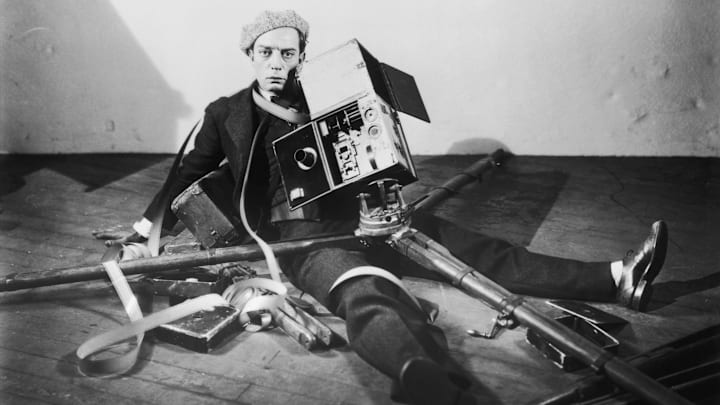More than a century after comedian Buster Keaton started making movies, filmmakers are still imitating his stunts, gags, and visual style. Keaton, who was known for his death-defying stunts and deadpan expression (they called him “The Great Stone Face”), was so dedicated to his art that he refused to fake a stunt or repeat a joke. He’d really fall from ledges, ladders, and moving cars, and—in one of the most expensive scenes in silent film history—even plunged a real locomotive into a river, rather than using a model, for his 1926 film The General (according to some, pieces of the wreck can still be seen in Oregon’s Row River to this day).
In his short video essay, “Buster Keaton—The Art of the Gag,” Tony Zhou of Every Frame a Painting explores Keaton’s genius and his enduring legacy. Zhou explains how Keaton’s films have influenced actors and filmmakers like Bill Murray, Wes Anderson, and Jackie Chan, and argues that, despite the ostensible limitations of early 20th century film technology, Keaton's understanding of framing, joke structure, and storytelling remain relevant to this day.
“There are some filmmakers who are so influential that no matter where you look, you see traces of them everywhere,” Zhou explains. Check out Zhou’s excellent video above.
